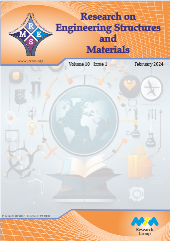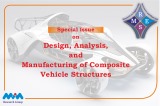Research Article
Investigation of strength and durability performance of concrete with varying crude oil waste ratios
Qosai Sahib Radi Marshdi1, Ali Jaafar Dakhil2, Zainab Al-Khafaji3,4
1Dept. of Water Resources Management Eng., College of Eng., Al-Qasim Green University, Babylon, Iraq
2Dept. of Roads and Transport Eng., College of Eng., University of Al-Qadisiyah, Al Diwaniyah, Iraq
3Imam Ja'afar Al-Sadiq University, Qahira, Baghdad, Iraq
4Dept. of Civil Eng., Faculty of Eng. and Built Environment, Universiti Kebangsaan Malaysia, Malaysia
Keywords
Abstract
Crude oil (CRO);
Chemical analysis;
Physical properties;
Normal concrete;
Reactive powder concrete;
Pollution
The influence of crude oil (CRO) pollution on concrete compressive strength and durability performance is evaluated in this work. Due to CRO contamination on its compositions, concrete exposed to oil-prone areas may lead to considerable changes in its properties. Experimental work has been conducted, and several cubes of concrete with varying ratios of CRO pollution were treated to study the impact of pollution on the mechanical characteristics of the concrete. The current research methodology consists of preparing contaminants by mixing CRO in different ratios with fine aggregates and mixing it with other raw materials to produce polluted concrete. Twelve CRO ratios (0, 1, 2, 2.5, 3, 4, 5, 6, 10, 15, 20, and 25%) were utilized to test typical concrete slump, compressive, and tensile strength. Then, the same concrete procedure and testing were repeated by utilizing 2% CRO in the case of reactive powder concrete. The chemical test was also utilized to identify the changes in concrete composition for the three samples (standard concrete without CRO, standard concrete with 2% CRO, and reactive powder concrete sample). The experimental tests illustrated that a ratio of 2% of CRO in standard concrete improves compressive and tensile strength, while utilizing the same ratio in reactive powder concrete reduces strength. On the other hand, utilizing 2% CRO illustrates that the internal sulfate amount has been increased for both normal and reactive powder concrete compared with normal concrete samples without CRO, which refers to a reduction in concrete durability.
© 2024 MIM Research Group. All rights reserved.


